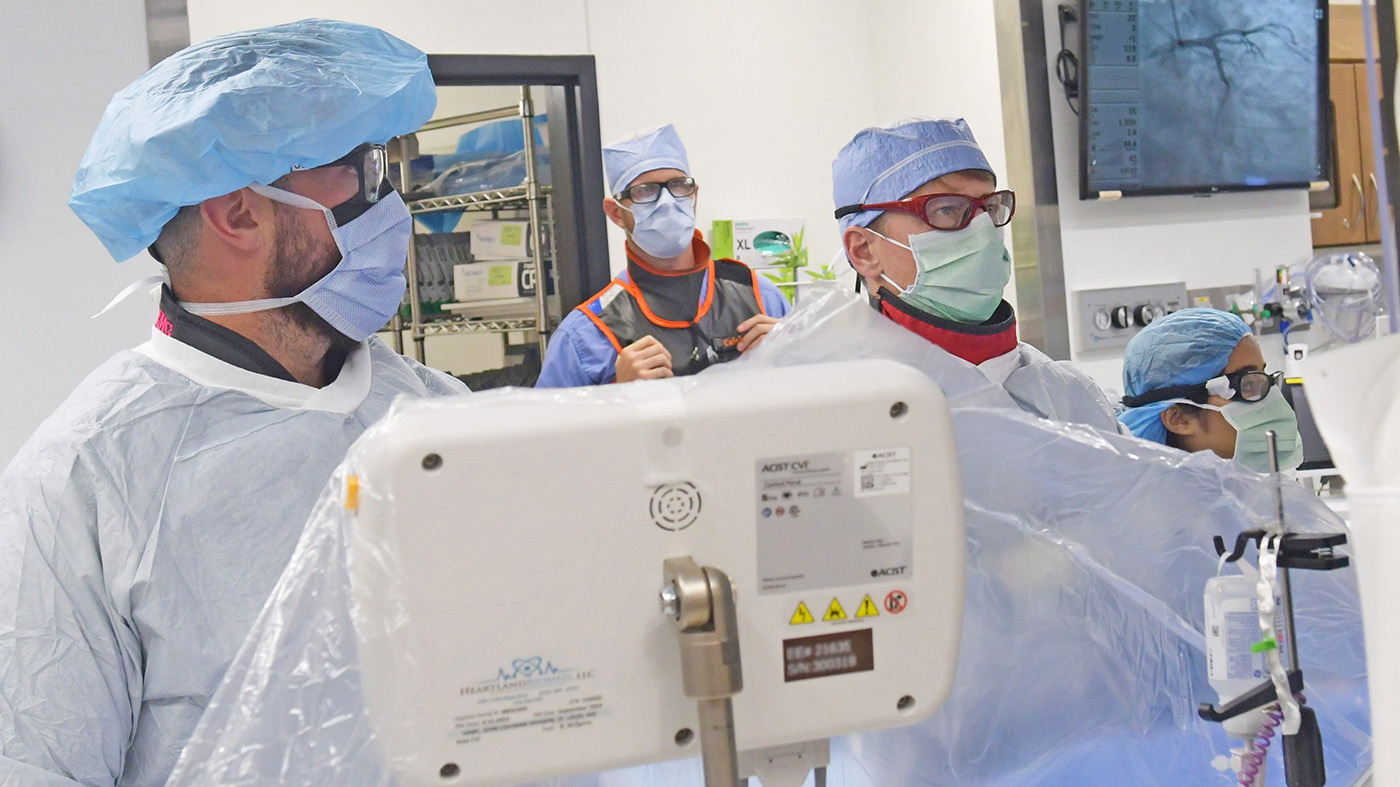The cardiology team at St. Louis VA has performed the hospital’s first two patient implants of the new WATCHMAN FLX Pro left atrial appendage closure device.
The team, led by Army Veteran Dr. Michael Schaeffer, director of the Invasive Cardiology program, is the first in Heartland VISN 15 to perform this procedure. The WATCHMAN is designed to reduce stroke risk as well as serve as an alternative to lifelong use of blood thinners for people with atrial fibrillation not caused by a heart valve problem.
“We performed this procedure for two Veterans who tolerated the procedures well, were home the next day, and have minimal restrictions,” Schaeffer shared.
After a 6-week follow-up, most patients can stop or reduce long-term blood thinners, reducing the risk of bleeding complications.
Pictured above are Dr. Michael Schaeffer (center) with assistance from interventional cardiology team Jake Lippert, (left), Dr. Sanskriti Shrivastava (right) and nurse Caleb Moen.
According to the Centers for Disease Control and Prevention, Atrial Fibrillation is a heart condition where the upper chambers of the heart beat too fast and with an irregular rhythm. AFib affects up to six million Americans. Stroke is the most common complication and AF-related strokes are frequently disabling or fatal.
“Lowering the risk of stroke.”
“The most common preventive strategy for AF-related stroke is blood thinners, but for patients with a high risk of bleeding we must provide other treatment options,” said Dr. Abhinav Diwan, chief of cardiology. “Innovation has been key in our field and we’re leading the way here at St. Louis VA. WATCHMAN allows us to lower the risk of stroke in a broad range of patients who cannot tolerate blood thinners.”
The success with the implantation of the WATCHMAN device follows another first for St. Louis VA. In July, Schaeffer and his team performed the implantation of a patent foramen ovale closure device. This device closes off a connection between the two upper chambers of the heart in patients with recurrent cryptogenic stroke, which is recurrent strokes without an identified definitive cause.
This connection between the atria is essential to life in the womb until birth when it closes spontaneously in most people. In a tiny percentage of people where it stays open, it can be a channel for paradoxical embolism where clots forming in the venous system cross over to the arterial side and cause strokes. Closing this off prevents stroke events.
“We are gearing up to start other structural heart interventions in addition to WATCHMAN and PFO closure. These include transcatheter aortic valve replacement and Mitral transcatheter edge to edge repair. We plan to continue all these procedures on a regular basis for our Veteran patients here,” said Diwan.
Veterans who may qualify for these procedures should start the conversation with their VA primary care doctor and cardiologist.
Topics in this story
More Stories
The program provides physical rehabilitation through telehealth, improving and sustaining physical function for older Veterans.
Our most recent annual report of Veteran suicide data highlights seven strategies to support Veterans.
Pain is like an alarm system; learn to reset the alarm with this 13-minute Mindfulness for Chronic Pain practice.





